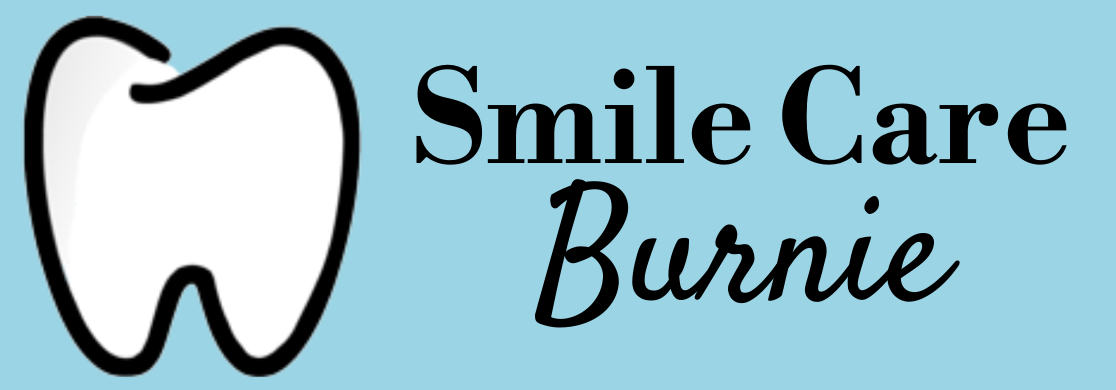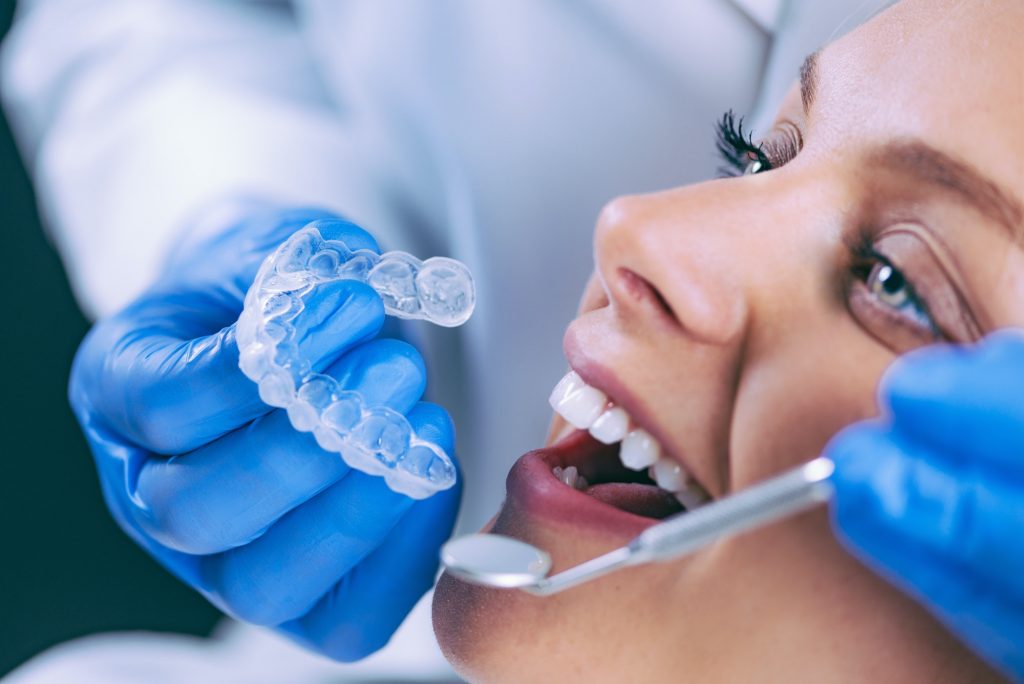

Invisalign©
Invisalign is a method of treating patients who do not require full orthodontic intervention, but need minimal correction to accomplish great looking teeth and a refreshing smile. A consultation with one of our dentist’s is necessary to determine if Invisalign is the right process for your teeth.
If so, you will go through a period of time wearing invisible aligners, which are periodically changed to bring your teeth into alignment. The length of time to complete the changes you require varies from patient to patient. Please call us to book a consultation. We will show you how Invisalign works and we’ll determine if it is the right solution for you.
Invisalign© is part of Align Technology — a global medical device company with industry-leading innovative products. We want to help dental professionals achieve the clinical results they expect and deliver effective, cutting-edge dental options to their patients. ©Invisalign Australia. All rights reserved.

Custom Fit Mouthguards
Custom-fit mouthguards are prescribed and created by a dental professional from thermoplastic material and are based on a detailed mould taken of your mouth and teeth.
These devices are highly personalized as your dentist can adjust the thickness of the mouthguard depending on your level of teeth grinding and clenching, and they are designed to fit perfectly in your mouth with no adjustments needed. Custom mouthguards can be made for either sports or for nighttime teeth grinding, and are created differently depending on the intended use.
Most mouthguards are generally only fitted for the upper teeth, but can also be fitted for the bottom set of teeth in certain situations. Unlike over-the-counter mouthguards, no two custom mouthguards are the same, and for that reason they provide the most complete protection for your mouth.
How well do they work?
Because custom mouth guards are so precisely made, they are able to provide you with optimal safety and comfort. This is something that over-the-counter mouthguards cannot ever achieve.
The level of protection afforded by custom-fitted mouthguards is unrivalled by any other mouthguard, and their durability is enhanced by the snug shape, which hugs each tooth closely, eliminating unwanted movement. For those who violently grind, clench, or gnash their teeth at night, custom-fit mouthguards can be made thicker, alleviating and reducing pressure on the jaw.
How long do they last?
Does my child need a custom mouthguard? Custom-fit mouthguards are very durable and do not lose their shape like store bought mouthguards tend to. The general rule of thumb for custom mouthguards is that every few years they may need replacing, depending on the level of wear and tear, and whether or not there have been any changes in the mouth or to the wearer’s teeth.
Children who are still growing will need their custom mouthguards updated more frequently to accommodate their changing mouths.
However, it is a good idea to bring your custom mouthguard with you to each dental checkup so that your dentist can ensure that it is still fitting properly and is not damaged.

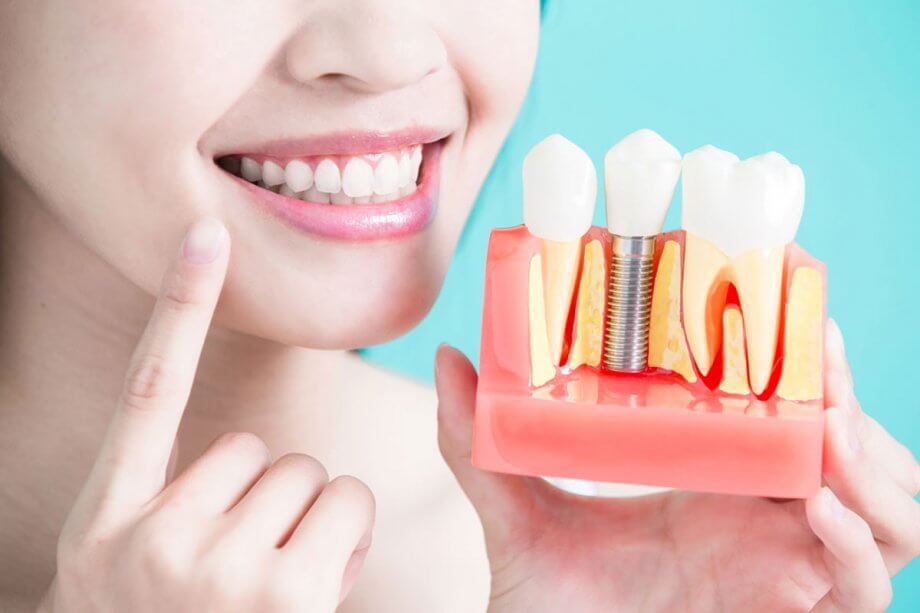

Dental Implants
Usually made from titanium or titanium alloy, dental implants are anchors fitted in the jaw bone to support dental restorations, such as crowns and bridges. Dental implants are the most commonly used tooth replacements amongst patients. They’re reliable and long-lasting, and allow you to retain your natural face shape while eating and talking normally.
Before your surgery commences, your dentist will carry out a dental examination including photographs, X-ray images, a CT scan and a digital mouth scan or impressions for dental casts in order to determine the best course of action for you.
Every dentist we work with is fully trained and capable, and boasts an extremely high success rate in banishing patients’ confidence issues with their teeth. You’ll always be provided with a clear breakdown of the costs of your treatment before your dental implants are created.
Burnie Smile Care Plan’s not only helps you to plan your treatment, but we also assist you in taking the necessary steps in completing it with dental implants that are indistinguishable from your original teeth.
ADVANTAGES OF DENTAL IMPLANTS
- Implants are fixed and do not need to be removed
- They do not trap food
- They are not a cause of embarrassment; which is often the case with dentures
- The teeth either side of the gap do not need to be treated. This avoids complications such as root canal treatment and decay
- The cost is comparative to having a bridge
REPLACING TEETH
It is very common for people to have more than one tooth missing or even a span of teeth missing. It is no longer necessary to fill these gaps with dentures or to cut down neighboring teeth for bridges. The team at Burnie Smile Care will restore what has been lost and your next set of teeth can come courtesy of implant dentistry.
The number of implants necessary depends on the number of missing teeth and the quality of your bone. Rest assured that your individual case will be assessed with the latest implant technology and techniques in mind.
Here at Burnie Smile Care, we possess the necessary skills set to accommodate for all scenarios.
SIMPLE CASES CAN TAKE AS FEW AS FOUR APPOINTMENTS
A comprehensive consultation including x rays and CT scans. We will provide you with a detailed treatment plan including a breakdown of costs and schedule,
Implant placement and temporary restoration We will always strive to provide you with temporary teeth whilst the implant fuses to your bone.
A healing phase is necessary and can range from weeks to months, however 3–4 months is usual (complex cases involving bone or soft tissue replacement normally take longer)Impressions are then taken to allow the technician to make the final implant supported teeth.
Delivery of your final implant supported teeth.
REPLACING ALL YOUR TEETH
When all of your teeth are missing, replacement used to mean dentures. Dentures are a handicap.
Implants are a way to make sure your next set of teeth look and feel natural. By placing multiple strategically positioned implants around the jaw, they can form the foundations for a full set of beautiful teeth. Nowadays, this often involves using the All on 4 concept
Each case must be carefully considered on an individual basis. The amount and quality of bone must be measured and the direction of any bone and soft tissue loss carefully considered. The number of implants will vary as will the material and techniques in the manufacture of your new teeth.
The team at Burnie Smile Care have many years experience in the consideration of these factors and can help guide you to the ideal solution for your personal situation.
The aim remains the same: To provide you with the confidence and comfort that a full set of natural looking teeth can provide. Over time your implant retained teeth will feel just like natural teeth.
Any surgical or invasive procedure carries risks. Before proceeding, you should seek a second opinion from an appropriately qualified health practitioner.

Preventive Dentistry
Initial Consultation
The first people you will meet will be our friendly reception staff, who will ask you to complete a medical form.
Our dentist needs to be aware of your general state of health as this can often impact upon the condition of your teeth and gums and may effect medication such as anaesthetics and antibiotics we may use for you.
At your consultation you will have the opportunity to discuss any dental concerns you may have or how you would like your teeth improved.
Your dentist will give you a full oral assessment to help accurately plan which treatments would be best for the health of your mouth. During this examination we will be looking at –
- Teeth and the way you bite
- Original restorations – Filling, crowns, veneers etc
- The health of your gums and surrounding bone around each tooth
- Your tongue, throat, cheeks & lips for signs of oral cancer
- Jaw joint evaluation
Dental X-rays will also be taken of your teeth to check for –
- Decay inside the tooth or between the teeth.
Abscess or cysts on the roots of your teeth. - Root positions
- Bone loss
Once the examination is complete the dentist will discuss the findings with you.
We will then create a treatment plan with alternative options for you, including all the benefits and risks of each procedure and the costings. This will allow you to decide what is best for your long term dental health
Sports Mouthguard
Mouthguards are made from a plastic material called Ethylene Vinyl Acetate (EVA). EVA is strong and tough and can be easily moulded to fit precisely over your teeth and gums.
Mouthguards are the most effective protective pieces of equipment to help prevent injury to the mouth – protecting the teeth, lips, cheeks and tongue. A mouthguard does not only protect your mouth, it can also cushion blows to the mouth or jaw therefore preventing damage to the jaw, neck or brain.
Having a dentist take special impressions will create a guard to perfectly fit your mouth, teeth and gums, providing ultimate protection. The procedure is very simple; your dentist will take moulds of your teeth both upper and lower. They will be sent to the dental laboratory where our technician will fabricate your custom made guard.
Bad Breath
Bad breath (or halitosis) is an unpleasant odour which can occur from time to time or be long lasting.The main cause of bad breath is in the mouth. We have millions of bacteria that live in the mouth, particularly on the back of the tongue and these bacteria feed on the food debris that accumulates in the mouth and between our teeth. The bacteria give off a sulphur compound and it is this that creates the bad odour. Smoking and drinking alcohol contribute to the unpleasant odour. There are other conditions which affect the airways and stomach that can lead to bad breath too.
Improving your oral hygiene is the most effective way to eliminate bad breath. Brushing teeth and tongue twice a day using fluoride toothpastes, as well as flossing, will remove the bacteria which generally removes the odour.


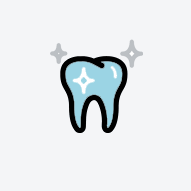
Aesthetic Dentistry
Tooth Whitening
Tooth whitening has become one of the most popular ways to improve your smile by lightening the existing shade of your natural teeth. This is a simple and effective treatment which can be carried out by your dentist or at home. Tooth whitening is non-invasive treatment which does not involve drilling or removal of the tooth surface.
Bonding
Dental bonding, also known as composite bonding, has been used in dentistry for many years. It is an excellent way to repair cracked, chipped and discolored teeth as well as replacing silver amalgam fillings. Dental bonding can also be used to close gaps and reshape misaligned teeth, providing a straighter, more uniform smile.
Bonding is probably the most conservative of all the cosmetic dentistry. It involves minimum alteration to the original tooth enamel, and is reversible if none of the tooth enamel is removed. The results are seen immediately.
Veneers
A veneer is a thin layer of tooth coloured material which is placed over your natural tooth to mask the underlying enamel.
Veneers are designed to enhance the appearance of your teeth by –
- Masking permanently stained teeth.
- Closing Diastemas – spaces between your teeth.
- Straightening misaligned teeth.
- Improving the appearance of damaged or broken teeth due to decay or trauma.
Crowns
A crown is a tooth shaped cover which fits over the existing structure of your natural tooth to protect and restore the tooth’s function.
Crowns can be used to –
- Strengthen teeth which have been weakened by decay or a large filling.
- Protect fractured, cracked and worn teeth.
- Improve the shape, alignment and shade of a tooth.
- After root canal treatment, to help strengthen the tooth.
Each crown is individually handcrafted by our dental technician to create a healthy, natural look.
Invisalign
Invisalign is the modern way to get the beautiful straight teeth you’ve always wanted — without braces. Schedule a consultation with our team so we can determine if Invisalign is right for you.
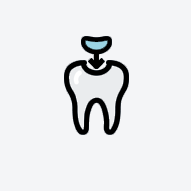
Restorative Dentistry
White Fillings
Fillings are the most common type of ‘restorative treatment’. A filling replaces the part of the tooth that has been lost because decay has caused a cavity in the tooth or because the tooth has broken. One option in restoring the tooth is to have a white filling, commonly known as a ‘Composite Filling’.
Many people have fillings, the majority being grey metal called ‘Amalgam’. Fillings do not just have to be practical, they can also be aesthetically pleasing and thus many patients no longer have the desire for amalgam fillings because they are visible : with most white fillings, no-one would know it was there.
Inlays/Onlays
Inlays and Onlays are restorations that are used to rebuild a tooth that has lost a significant amount of its structure due to decay or trauma. Similar to dental fillings but rather than being directly placed into your tooth and then set, they are fabricated in our dental laboratory and then cemented into place. This is known as an ‘indirect procedure’. Inlays fit into the tooth whereas onlays sit on top of the remaining tooth structure.
Crowns
A crown is a tooth shaped cover which fits over the existing structure of your natural tooth to protect and restore the tooth’s function.
Crowns can be used to –
- Strengthen teeth which have been weakened by decay or a large filling.
- Protect fractured, cracked and worn teeth.
- Improve the shape, alignment and shade of a tooth.
- After root canal treatment, to help strengthen the tooth.
Bridge
A bridge is one of the options to replace one or more missing teeth. It is a permanent fixture which is anchored to the adjacent natural tooth or teeth (the abutment) to ‘bridge’ the gap where the tooth (or teeth) is missing (the pontic). This also prevents the adjacent natural teeth from drifting.
Dental Implants
Dental Implants are the latest innovation to replace a missing tooth or a number of teeth. An implant consists of an artificial titanium rod which is placed directly into the jaw bone and acts as a replacement for the root portion of the natural tooth. The implant is made using pure titanium which allows new bone cells to grow around it: the implant then integrates with the newly formed bone which firmly locks it into place. This process is called ‘Osseointegration’.

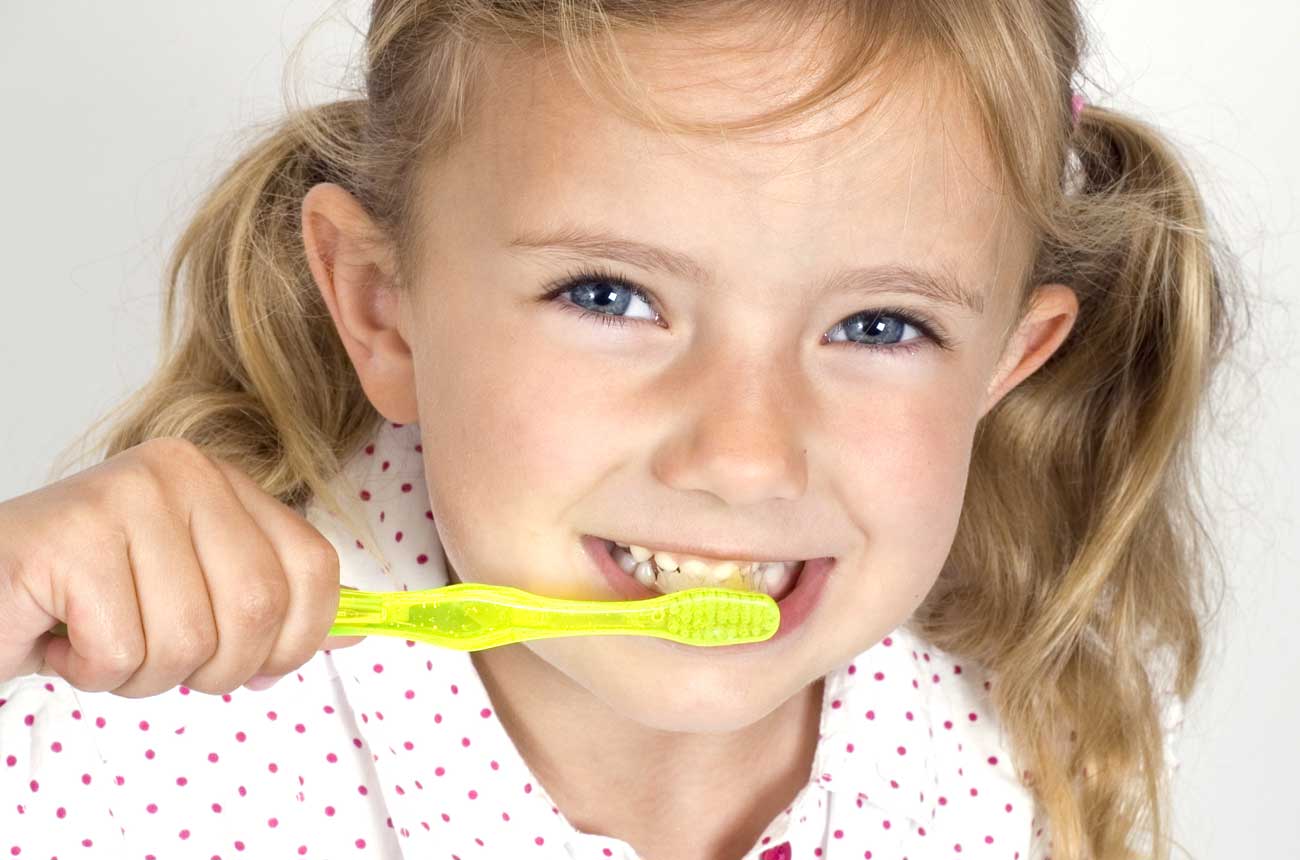

Children's Dentistry
Fissure Sealant
Fissure sealant is a tooth coloured liquid which is applied on the chewing surface of adult molar teeth to prevent cavities from forming in early years. Once applied the coating is permanent, and will stay on your teeth for a number of years.
Why do I need fissure sealants?
Your back teeth are known as premolars and molars and have pits and grooves on the biting surface, some of which can be deep and difficult to keep clean with brushing. Food particles can become trapped and this creates a perfect breeding ground for plaque bacteria which if left, will generate cavities. Fissure sealants work by filling the deep pits and grooves making it easier to clean your teeth and thus helping to prevent cavities from forming.
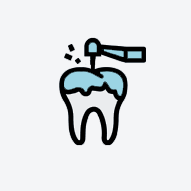
Root Canal
Root Canal Treatment
This dental procedure is carried out when the innermost part of the tooth ‘the pulp’ becomes badly decayed or infected. If left untreated, the tooth will begin to die which could lead to the loss of the tooth. To save the tooth, the infected pulp needs to be removed to prevent the formation of an abscess. In dental terms this procedure is called ‘Endodontics’
The tooth is made up of
- Enamel – The hard outer layer of the tooth.
- Dentine – This forms the core and gives the basic shape to the tooth which supports the enamel, it is softer than enamel but harder than bone.
- Pulp – Is the central part of the tooth which contains nerves and blood vessels and lies within the root canal

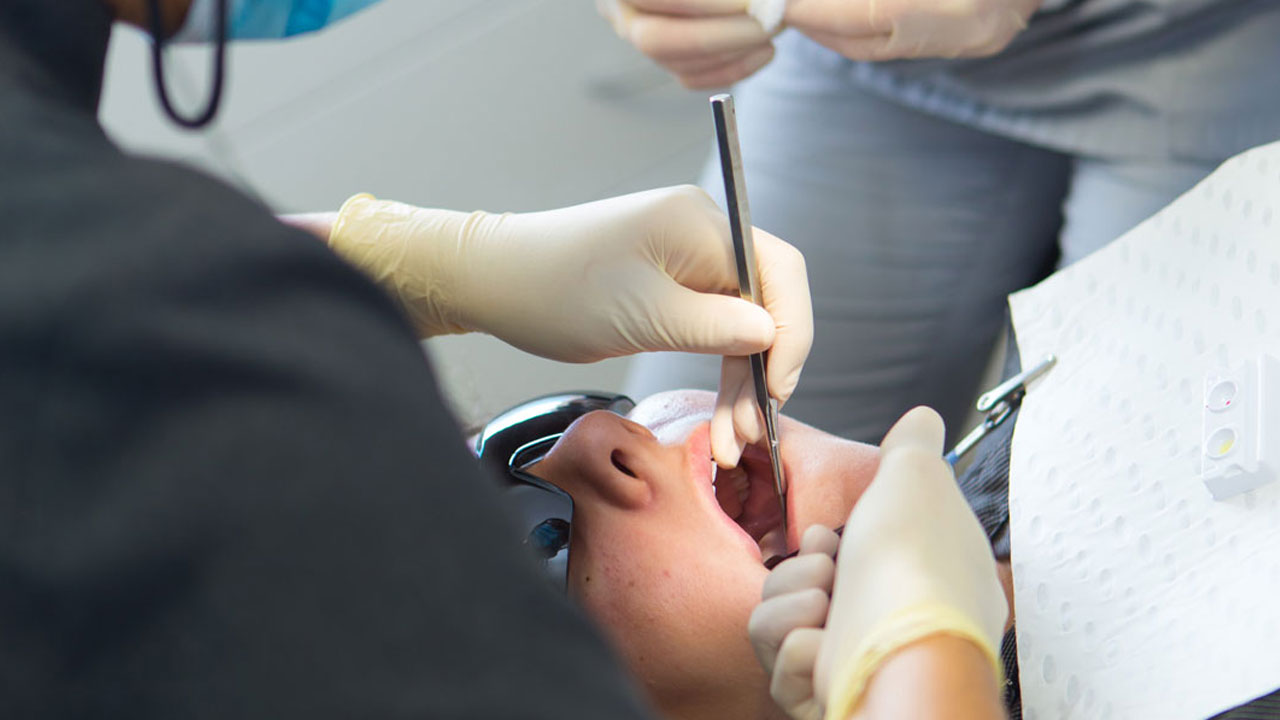
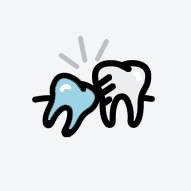
Wisdom Tooth Removal
Adults have up to 32 teeth, of which four are wisdom teeth and these are the last to come through the gum. They are the one’s right at the back of the mouth and usually appear between the ages of 17 and 25 although sometimes they can appear in later years.
If there is enough room in the mouth the wisdom teeth will come through (erupt) in a useful position and there will only be minor discomfort as they erupt. However, wisdom teeth can cause problems if there is not enough room in the mouth, as the wisdom tooth erupts at an angle and gets stuck against the tooth in front; the dentist will describe this as ‘Impacted’.
The dentist will be able to assess whether there is sufficient room for the teeth to come through by taking an x- ray which will show the position of the root. Once the x-rays have been taken, the dentist will be able to tell how easy or difficult it will be to remove the tooth. The dentist will then determine whether the tooth should be taken out at the Dental Practice or by a Specialist Oral Surgeon.
The dentist will only recommend taking out wisdom teeth if –
- The teeth are not able to fully erupt through the gum and are causing an infection in the surrounding tissue; this is known as Pericoronitis.
- There is decay present – wisdom teeth will often decay as it is very difficult to clean them as thoroughly as your other teeth.
Following the removal of wisdom teeth, there is likely to be some discomfort. However, this will vary depending on how difficult it was to remove the tooth; it is not uncommon to experience some swelling for a few days. The dentist will advise on how best to reduce this discomfort and may recommend pain killers such as Paracetamol or Ibuprofen. A further dental appointment will be necessary for the dentist to check the healing process and remove any stitches.
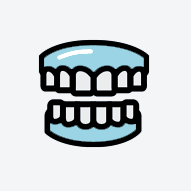
Dentures
Initial consultation
Your dentist will assess your needs and thoroughly examine your mouth for suitability for dentures, looking at –
- All your existing teeth, checking for mobile teeth as these may have to be removed prior to having new dentures.
- Looking at existing restorations, fillings, crowns etc.
- The health of your gums, to make sure there is no infection present.
- The way the teeth bite together
- If you have no natural teeth, accessing your gums and underlying bone.
The procedure will be explained to you and a treatment plan given stating all the stages and the costing.
Generally, from 2 up to 4 appointments will be necessary as dentures are made in stages. The stages are the same whether you are having Full dentures or Partial dentures. The only exception being an ‘Immediate denture’, when a tooth is extracted and the denture is fitted immediately to replace the missing tooth. This denture will then have to be adjusted or replaced in 3 to 6 months after the extraction.
The Procedure
Appointment One – Impressions (moulds) will be taken of both your upper and lower teeth. These are then sent to the dental laboratory where the technician will fabricate a ‘special’ tray designed to fit your mouth perfectly and a wax bite block to record the way your teeth bite together.
Appointment Two – Impressions (moulds) will again be taken, using the ‘special tray’ which the technician has made, this helps to achieve a more accurate mould of your teeth and gums. A registration of how your teeth bite together will be recorded using the wax bite block. Both the impression and wax block are sent to the laboratory where our technician will construct a trial denture. The shade of the teeth will also be taken at this stage.
Appointment Three – The trial denture; The teeth are now set in wax, for Cobalt Chrome dentures the metal frame work is completed and the teeth are attached to the frame work with wax. You dentures will be tried in to ensure that it fits correctly, is comfortable and the teeth bite together correctly, any adjustments will be made at this stage. Your dentures are again returned to the Laboratory for the final stage of completion.
Appointment Four – your dentures will be fitted.
Your Dentures
It will take a while getting used to new dentures, time and patience is needed. Upper dentures my affect your speech for a few days whilst your tongue gets used to having the denture in place, please persevere as this will soon pass.
Dentures may cause soreness in the first 24 hours, if the soreness persists please contact your dentist as the dentures may need slight adjustments, this can be done at the surgery.
Keeping your dentures clean at all times is important. Rinse them after meals if possible and brush them twice a day using toothpaste or soap and water. Dentures are only to be worn whilst you are awake; they need to be removed at night as your gums need to have ‘a rest’, having this rest keeps your gums healthy. Your dentures can then be sterilized in a denture solution while you sleep, always rinse or brush your dentures before putting them back in your mouth. If your dentures get stains that you cannot remove ask your dentist to clean the professionally at your next appointment.
It is important that you still have regular examinations with your dentist even if you have no natural teeth, as the dentist needs to look for changes in your gums and the underlying bone. Also to check your tongue, throat, cheeks & lips for infection or signs of oral cancer.


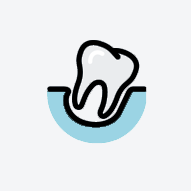
Extractions
Dental Extraction is a removal of a tooth from the mouth. It is performed for a wide variety of reasons.
- Tooth decay – If the decay is severely advanced and the nerves and blood vessels in the tooth have been infected, and are unsuitable for root canal treatment.
- Impacted wisdom teeth – Sometimes our mouths are simply not big enough to accommodate these teeth. The teeth become impacted (stuck), this can cause infection and pain.
- Orthodontics (braces) – Teeth can erupt in many different positions, if this happens you may have to have teeth extracted so your other teeth can be brought into line.
- Periodontal disease – Bacterial infection under the gum damages the tissue which connects the tooth to the gum; as the disease progresses, the bone anchoring the tooth to the jaw begins to dissolve, resulting in the tooth becoming loose.
- Teeth that have been damaged by trauma.
- Certain medical conditions may require teeth to be extracted.
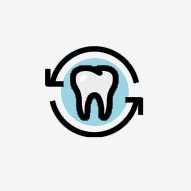
Post Operative Instructions
After the extraction a blood clot will form in the socket were the tooth used to be, this is NOT to be disturbed by vigorous rinsing or poking the site with your tongue or finger as it is a very important part of the healing process.
If the socket does start to bleed after you have left the dental practice, place a clean tissue or handkerchief over the extraction site and apply pressure by biting down, the bleeding will normally stop within a few minutes. Again do NOT disturb the blood clot. If the bleeding does persist please contact your dentist for further advice.
Your mouth will still be numb for an hour or so after the local anaesthetic, please take care not to bite your cheek or tongue or burn your mouth when drinking hot liquids.
Avoid Smoking and Alcohol for 24 hours as these can have an effect on the healing process
You may be in discomfort after the anaesthetic has worn off, taking a household painkiller will help (headache tablet) following the manufactures instructions. Do NOT take Aspirin as this may cause the socket to bleed

